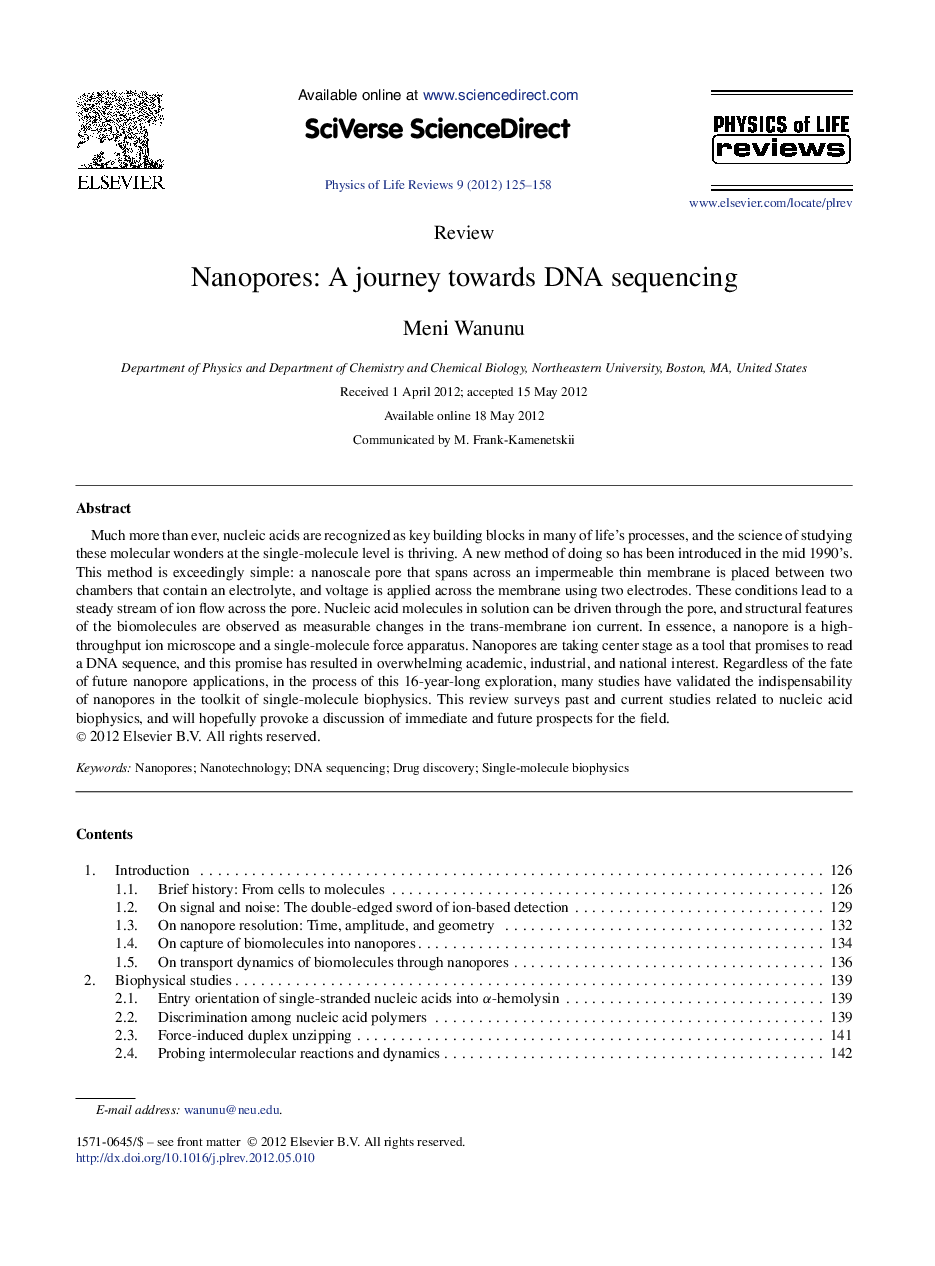| Article ID | Journal | Published Year | Pages | File Type |
|---|---|---|---|---|
| 1868631 | Physics of Life Reviews | 2012 | 34 Pages |
Much more than ever, nucleic acids are recognized as key building blocks in many of lifeʼs processes, and the science of studying these molecular wonders at the single-molecule level is thriving. A new method of doing so has been introduced in the mid 1990ʼs. This method is exceedingly simple: a nanoscale pore that spans across an impermeable thin membrane is placed between two chambers that contain an electrolyte, and voltage is applied across the membrane using two electrodes. These conditions lead to a steady stream of ion flow across the pore. Nucleic acid molecules in solution can be driven through the pore, and structural features of the biomolecules are observed as measurable changes in the trans-membrane ion current. In essence, a nanopore is a high-throughput ion microscope and a single-molecule force apparatus. Nanopores are taking center stage as a tool that promises to read a DNA sequence, and this promise has resulted in overwhelming academic, industrial, and national interest. Regardless of the fate of future nanopore applications, in the process of this 16-year-long exploration, many studies have validated the indispensability of nanopores in the toolkit of single-molecule biophysics. This review surveys past and current studies related to nucleic acid biophysics, and will hopefully provoke a discussion of immediate and future prospects for the field.
► Nanopores are a recent addition to the toolbox of single-molecule biophysics. ► Force can be applied to single molecules without using any chemical label or surface immobilization. ► Nucleic acid transport through small pores is a complex yet highly informative process. ► Pore-based genotyping/sequencing can revolutionize personalized medicine, forensics, and research.
